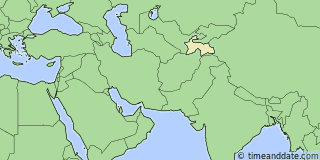
An airport’s runways and taxiways infrastructure account for a substantial portion of its capital expenditure, but more importantly are typically its most significant capacity constraint. This directly correlates with passenger levels of experience and satisfaction. A terminal’s relationship with its apron in terms of distances between aircraft and their stands and bridges will dictate the speed at which carriers can seat passengers and depart. However, a vast terminal with the ability to hold large numbers of passengers will not be financially viable if the carriers cannot support it. Terminal and runway capacity are directly related. IATA however, has suggested passenger traffic in the Middle East may grow by 5% per year when considering the 2019 to 2024 outlook. growth has however been relatively flat in comparison to the Middle East as a whole, with some in the market predicting that it will flatten further proceeding into 2020.
PEAKHOUR NO INTERFACES FULL
It has accelerated international growth at the parent, full service, brand and has been using its new low-cost carrier (LCC) subsidiary ‘flyadeal’ to accelerate growth in the domestic market, with LCCs in the Middle East said to have experienced 12% growth in seat capacity in 2018 alone. This Middle East regional growth has coincided with the transformation of Saudi Arabia’s Saudia Airline in a newly-liberalised marketplace. Whilst below that of 2017, this does confirm the trend that Middle East air travel continues to grow, thereby placing continued pressure on the Middle East’s aviation infrastructure and terminal capacities.

While international capacity, which is estimated to account for 84% of the 2018 total capacity, is said to have grown by only 2.8%, the capacity is estimated to have achieved a much larger 9.4% growth in 2018. While the Middle East experienced its slowest airline passenger seat growth for over a decade in 2018, it still grew above the global average. With the report also noting that 45 of the world’s 100 busiest airports already have capacity issues, there are major changes and development required. Global airport passenger traffic is expected to double by 2035, according to the recent report titled Airport of the Future, from the International Air Transport Association (IATA).
PEAKHOUR NO INTERFACES DRIVERS
Cost analysis of comparable aviation data is increasingly seen as essential in driving valueĪnd identifying key cost drivers inherent in the design of airports. Importance of cost analysis and benchmarkingĬlients are increasingly understanding the importance of benchmarking their development programme and aspirations with competing developments to ascertain capital cost expectations at differing levels of detail.

The ability to future-proof the design to accommodate technology advancements must also be a key consideration. The design and construction of new airport facilities must consider anticipated passenger growth forecasts and the enhanced level of service that passengers increasingly expect. Further, airport operators are seeking to establish their hubs as the preferred facility for passengers to travel through by enhancing connectivity passenger experience.

Current situation In the Middle EastĪcross the Middle East new aviation hubs are being developed and existing facilities upgraded to meet a projected increase in global and Ashley Morgan, Associate Director, Aviation at AECOM, explores the key issues to consider when increasing airport capacity and the importance of cost analysis and benchmarking. Coupled with passengers’ increased ‘level of service’ expectations and demands, this means that terminal building designs need to catch up or face becoming obsolete. Airports globally are facing unprecedented demand and growth.


 0 kommentar(er)
0 kommentar(er)
